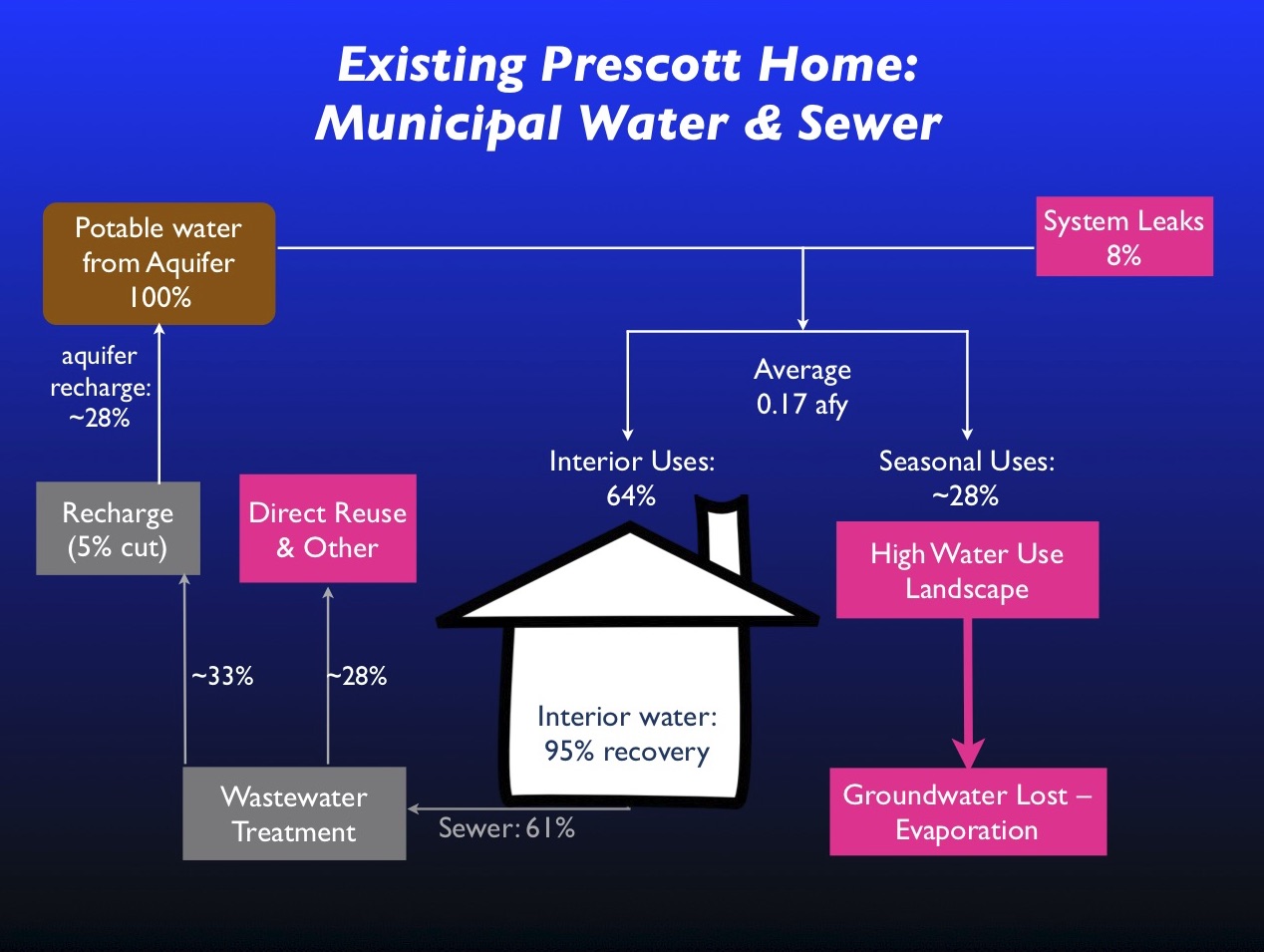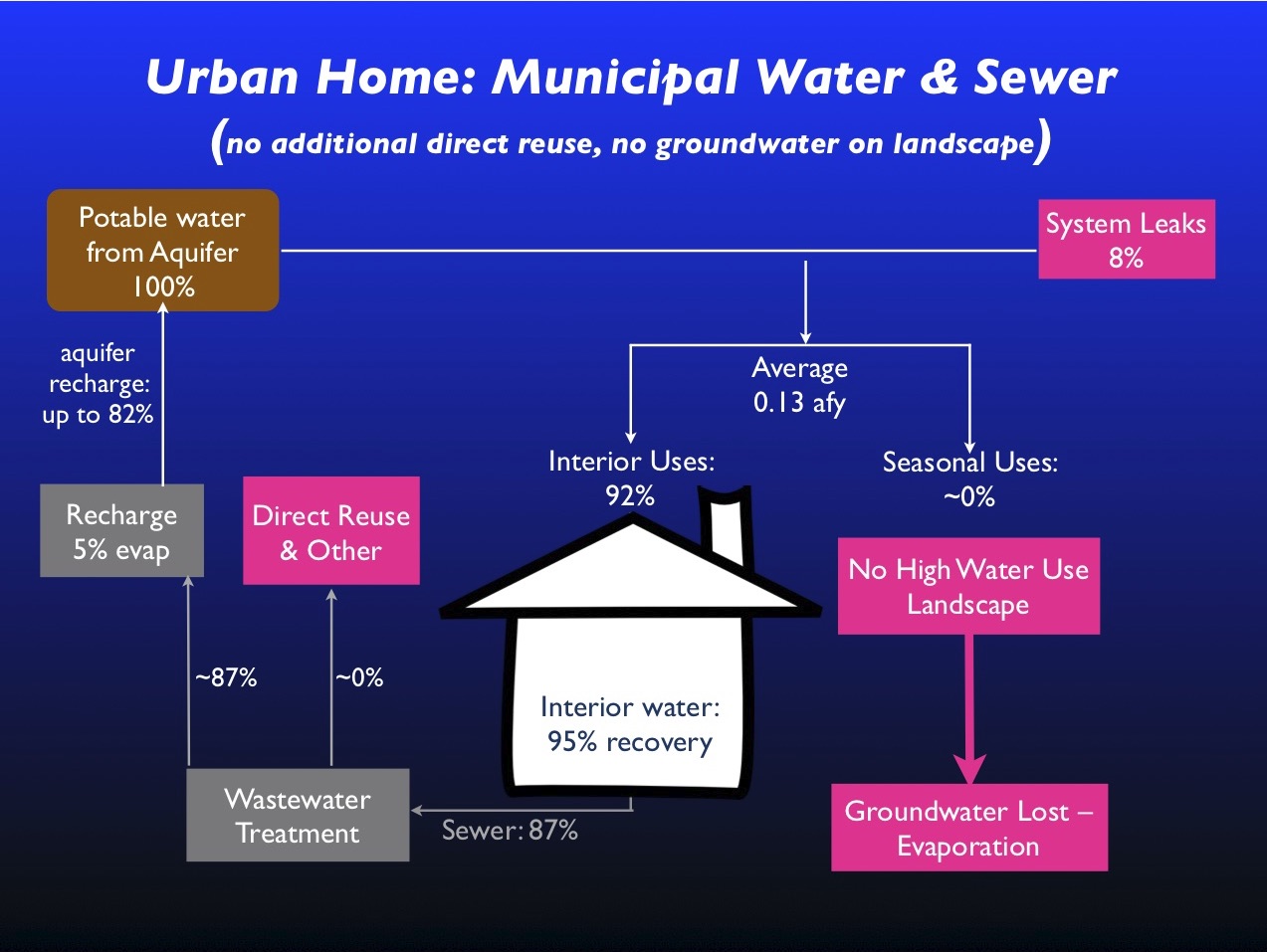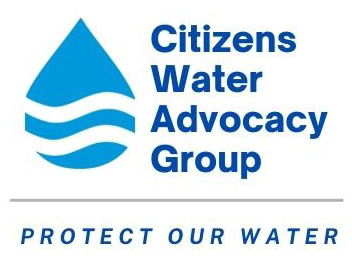Net Loss of Water from Each New House
The potable water supplied to existing homes and business in the Prescott Active Management Area (PrAMA) is 100% groundwater. Because we are pumping groundwater faster than it is being recharged, we are now depleting our aquifers and consuming our stored water resources.
Each new home or building requires more groundwater than can be recovered. Therefore, each new home or building increases the overdraft. Despite local officials’ assertions that artificial wastewater recharge will not increase the overdraft, that is not possible.
To explain, consider how water flows through an average single family home in Prescott.

About 8% of the groundwater pumped is lost in pipeline leaks before it reaches the home water meter. In an average year, an average Prescott homeowner uses 28% of groundwater pumped for outside uses, mainly for irrigating landscape plants. All water used for irrigation is lost to evaporation. Thus 36% of the groundwater pumped is lost to evaporation.
The remaining 64% is used inside the home. After losses due to cooking, showers, and other uses, 95% of the interior water used is recovered in the sewer system. Only 61% of the groundwater pumped is sent to the wastewater treatment plant to be processed.
A portion of the treated wastewater (28% of groundwater pumped) is used to water golf courses (direct reuse) and the remaining 33% is sent to recharge ponds near the airport. After evaporation at the ponds, we estimate that only 28% of the groundwater pumped is recharged into the aquifer.
However, this 28% recharge water does not benefit the aquifer because state water law awards recharge credits that the cities use to pump additional water to support new development. Recharge credits are the primary source of water for new subdivisions.
Proposition 400, added to the Prescott City Charter in 2006, provides that all wastewater from new annexations over 250 acres must be dedicated to permanent recharge that cannot be recovered to support development. Thus the wastewater recovered from new annexations does benefit the aquifer to the extent that leaks, evaporation, and direct reuse are minimized.
For a new subdivision that is connected to municipal sewer system (no septic tanks) and uses drought-tolerant plants, assuming no additional direct reuse and no use of groundwater on landscapes, CWAG estimates that a maximum of 82% of the groundwater pumped could be permanently recharged to benefit the aquifer. This demonstrates the importance of controlling landscape water uses for all water customers.

Even in the best possible case, approximately 20% of the groundwater pumped is not returned to the aquifer. New growth increases the overdraft and harms the aquifer. It is possible to construct new Net-Zero Groundwater subdivisions that could recharge more water than they use. This water neutral approach would permit growth without increasing groundwater demand.
